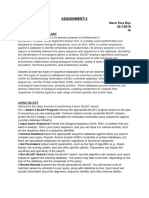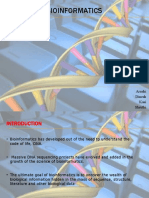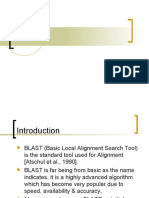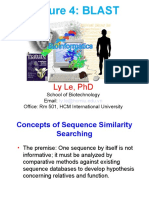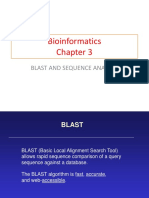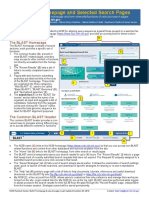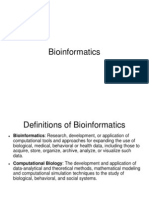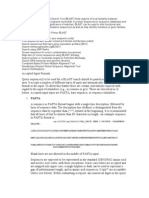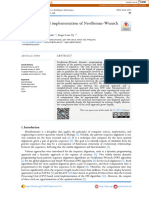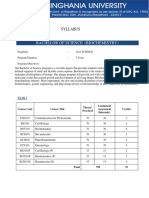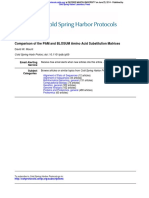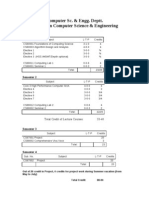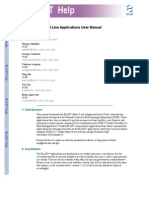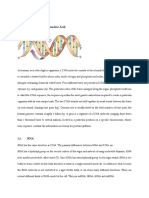0% found this document useful (0 votes)
20 views4 pagesMastering BLAST Tutorial
BLAST (Basic Local Alignment Search Tool) is a widely used bioinformatics program for comparing sequences to identify similarities and evolutionary relationships. It includes various types such as BLASTN, BLASTP, and TBLASTX, each suited for different sequence comparisons, and requires careful preparation of query sequences and database selection. Understanding how to run and interpret BLAST searches is essential for applications in gene identification, evolutionary studies, and functional annotation.
Uploaded by
aviure123Copyright
© © All Rights Reserved
We take content rights seriously. If you suspect this is your content, claim it here.
Available Formats
Download as DOCX, PDF, TXT or read online on Scribd
0% found this document useful (0 votes)
20 views4 pagesMastering BLAST Tutorial
BLAST (Basic Local Alignment Search Tool) is a widely used bioinformatics program for comparing sequences to identify similarities and evolutionary relationships. It includes various types such as BLASTN, BLASTP, and TBLASTX, each suited for different sequence comparisons, and requires careful preparation of query sequences and database selection. Understanding how to run and interpret BLAST searches is essential for applications in gene identification, evolutionary studies, and functional annotation.
Uploaded by
aviure123Copyright
© © All Rights Reserved
We take content rights seriously. If you suspect this is your content, claim it here.
Available Formats
Download as DOCX, PDF, TXT or read online on Scribd
/ 4










